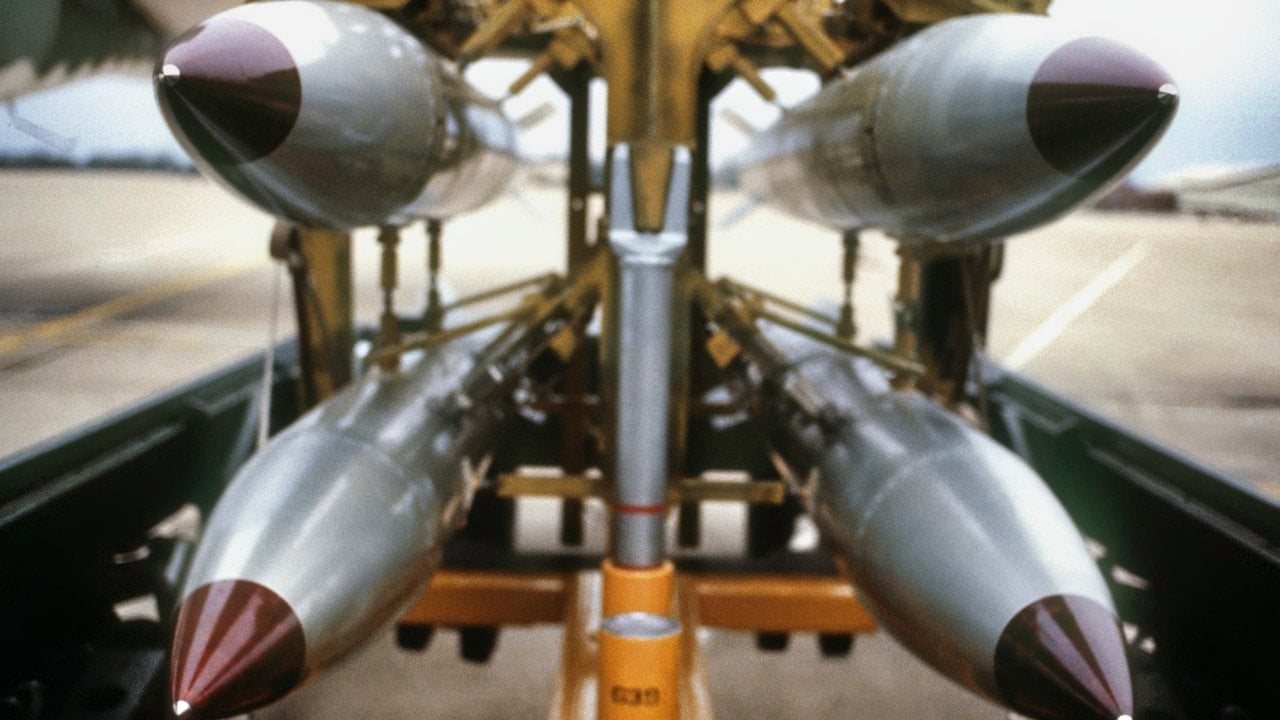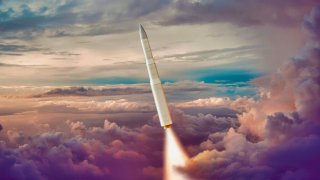What Would Donald Trump Do on Nuclear Weapons?
Former President Donald Trump said little about what he might do on nuclear weapons policy if he gets back into the White House. This is surprising for someone who spent so much time talking about the bomb when he was in office.
Former President Donald Trump has said little about what he might do on nuclear weapons policy if he gets back into the White House. This is surprising for someone who spent so much time talking about the bomb when he was in office. But if we look at his past policies and what he and his allies are saying, we can get a pretty good idea about what he might do. And it is not a pretty picture.

While in office, Trump threatened to “totally destroy” North Korea and then tried (and failed) to get a nuclear deal with its leader, Kim Jong Un. Trump walked away from a successful deal with Iran, only to see Tehran then accelerate its nuclear program. He withdrew from one arms control treaty with Russia and then refused to extend another. He considered resuming US nuclear testing, which would have violated yet another global pact. In short, Trump did on nuclear policy what he did on so much else: create chaos and undermine the rule of law.
With four more years, Trump could do even more damage, wreaking havoc on an already weakened network of treaties and agreements that have reduced the risk of nuclear proliferation and war.
Reagan’s “Star Wars” Dream
In his speech at the GOP convention, Trump had just one clear proposal related to nuclear policy: “We will replenish our military and build an Iron Dome missile defense system to ensure that no enemy can strike our homeland.” Short on details, this looks like a throwback to former President Ronald Reagan’s 1983 proposal—called the Strategic Defense Initiative (SDI) and derided as “Star Wars”—to build a system of space- and ground-based interceptors to make nuclear weapons “impotent and obsolete.” It made for great slogans, but after forty years and some $400 billion, the technology is still not up to the challenge. Israel’s Iron Dome system has had success because it has a limited mission: defend a small country (the size of New Jersey) from short-range missiles. But if you try to scale that up and cover a country the size of the United States against hundreds of Russian and Chinese long-range missiles, it just won’t work.
But it could set off a new nuclear arms race. If Moscow and Beijing take Trump’s plans seriously, their likely response would be to build hundreds of additional nuclear-armed missiles to overwhelm the new defense.
New Arms Race
Trump might provoke a new arms competition even without his Iron Dome on steroids. Robert O’Brien, Trump’s last national security advisor (2019-2021), wrote a recent article in Foreign Affairs calling for the United States, “to maintain technical and numerical superiority to the combined Chinese and Russian nuclear stockpiles.” The idea here, popular among conservatives at the Heritage Foundation and Project 2025, including Christopher Miller, Trump’s last defense secretary, is that Washington needs to have more nuclear weapons than Moscow and Beijing combined.
This is a terrible idea. Firstly, there is every reason to believe that Russia and China are already deterred from attacking the United States based on the current arsenal we have, which is about 3,748 nuclear weapons. Building more than we need is a waste of money. Second, guess what Moscow and Beijing will do if Washington suddenly builds more bombs? They will do the same, and we will be worse off since we will now be in the middle of a race for ever more deadly nuclear arms. Third, a US buildup would doom any chances of saving the US-Russian arms reduction process. The last remaining treaty, New START, expires in 2026 and unless we replace it there will be no legal limits on US and Russian warheads for the first time in fifty years.
Nuclear Testing
In the same article, former national security advisor O’Brien also writes that “Washington must test new nuclear weapons for reliability and safety in the real world for the first time since 1992—not just by using computer models.” The United States ended nuclear testing three decades ago (under President George H.W. Bush) and then signed the Comprehensive Test Ban Treaty in 1996, banning all nuclear tests. Washington has conducted more nuclear tests (1,030) than all other nations combined. As long as the United States does not develop new types of nuclear weapons it has no need to test. But if we resume testing other nations would too, like Russia and China, and Beijing has only conducted forty-five tests. Imagine how much China could learn if Trump gives it an excuse to resume testing? The only state in the world today that is still conducting nuclear tests in North Korea (six tests); we should be pressuring Pyongyang to stop, not reopening this Pandora’s box.
Whoever wins in November, the next president will make decisions that could reshape US and global nuclear policy for decades to come. Under Trump, we could see billions spent on ineffective long-range missile defenses, the end of arms control the start of a new nuclear arms race, and new nuclear testing. All of this would make the world a more dangerous place and increase the risk of nuclear conflict. If Trump wins, get ready for a wild ride.
About the Author: Tom Z. Collina
Tom Z. Collina is a national security expert and award-winning author. He is the former Director of Policy at Ploughshares Fund and an author, with former Defense Secretary William Perry, of “The Button: The New Nuclear Arms Race and Presidential Power from Truman to Trump.”
Image Credit: Creative Commons and/or Shutterstock.


